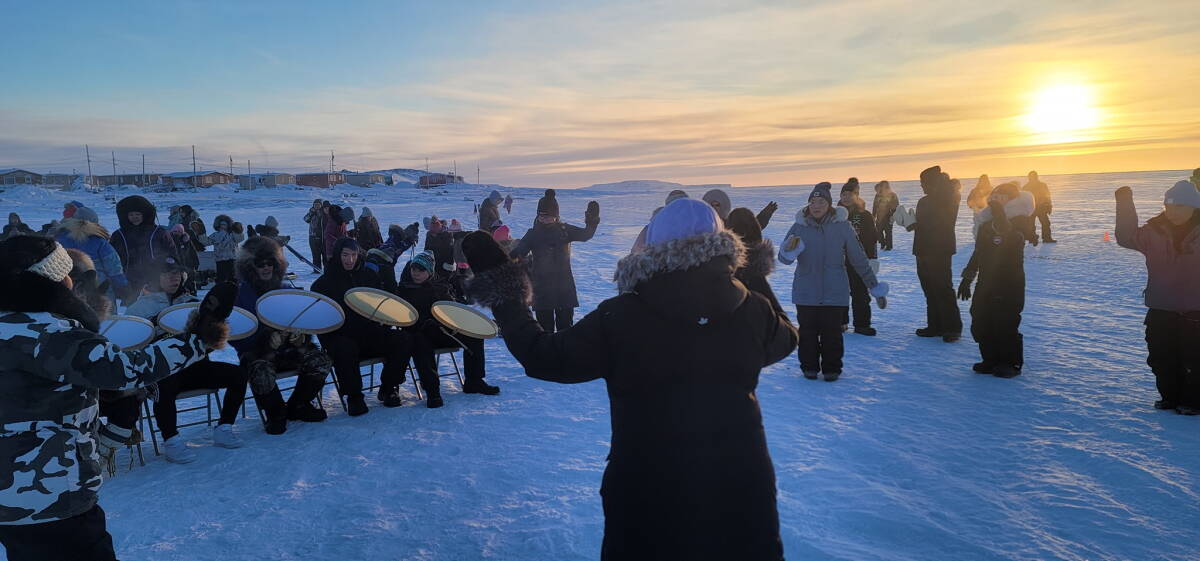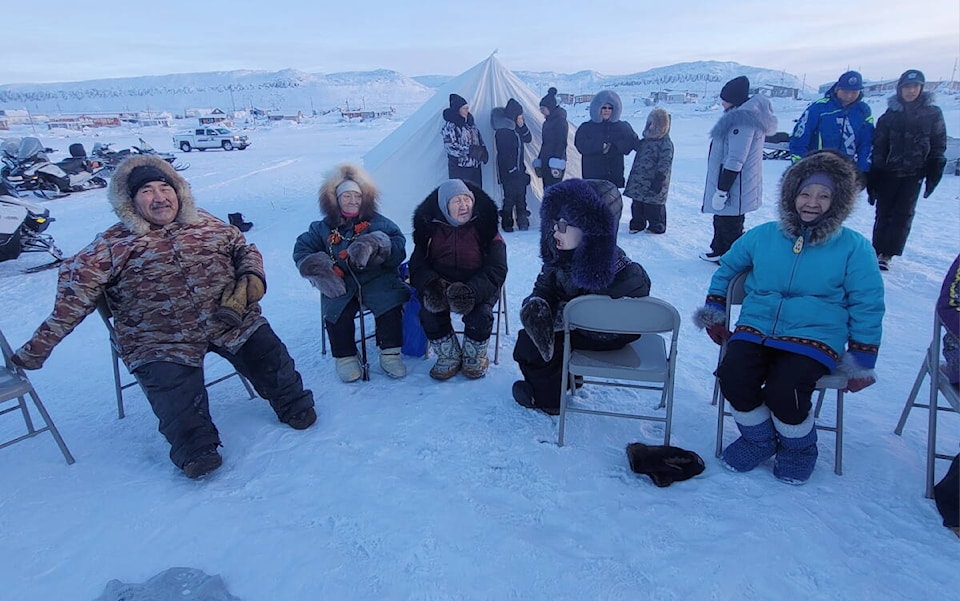Ulukhaktok’s Joshua Oliktoak sees many reasons for hope that Inuinnaqtun will persevere, if not thrive in the future.
Although there are only several hundred people in the world who still speak this particular Inuit language, Oliktoak points to language camps for youth where Elders promote Inuinnaqtun, along with hunting and other traditional and cultural practices.
He speaks highly of an “awesome” Inuinnaqtun dictionary that Emily Kudlak and Richard Compton developed several years ago as a helpful resource.
There are local residents who taught the language at evening and weekend classes and during cooking lessons prior to the pandemic.
He also draws on his own experience, whereby he grew up in a household surrounded by Inuinnaqtun speakers, but he strayed from the language during his teenage years. A decade or so later, with encouragement from his sisters who have held tightly to Inuinnaqtun, Oliktoak resumed conversing in it.
“It takes a community to work together to help bring our language back but most importantly to preserve our language and give it to our youth as they will be the ones to help keep it alive,” he says, noting the extensive help he has received. “A lot of people in the community… always teach me words. Even today I’m still learning words because there are words that are hardly used anymore and they have meanings that have got to be remembered.”
Helena Ekootak finds herself in a similar predicament to where Oliktoak was before, and she too is determined to once again make Inuinnaqtun central to her life.
“I am eager to relearn my language for the sole purpose of keeping it alive. It is a beautiful language that needs the recognition it deserves,” she says.
She has accepted an offer to take language fluency training next month in Ottawa with the Language Bureau of Canada.
“On top of that, I will be studying both versions my Inuinnaqtun dictionaries and have asked my family and fellow language holders to speak to me in our language whenever they interact with me,” she says. “I also plan of spending time with my Elders, who are incredibly fluent in the language.”

Photo courtesy of Helen Kalvak Elihakvik
Language board
Oliktoak is in his fifth term with the territorial government’s Aboriginal Languages Revitalization Board, which makes recommendations to the minister of Education, Culture and Employment “on matters related to programs and initiatives that promote, enhance, maintain and revitalize the nine official Aboriginal languages of the Northwest Territories,” according to the GNWT.
The board’s structure is inclusive of at least one representative for each of the Chipewyan, Cree, Gwich’in, Inuinnaqtun, Inuktitut, Inuvialuktun, North Slavey, South Slavey and Tlicho language communities. However, of 18 total seats, six are currently vacant.
Back in Ulukhaktok, Oliktoak, who’s in his second term as mayor in the community of close to 400 residents, says he will continue to support aspirations to revitalize Inuinnaqtun.
“We have to be optimistic,” he says. “If we be pessimistic, we may turn people away from it. It’s best to be optimistic and to encourage youth as much as you can — not only youth but anyone who wants to speak, help bring back their language in any way, or any dialect — we have to encourage them as much as we can so they help keep the language alive.
“It’s part of our culture. It’s who we are.”
